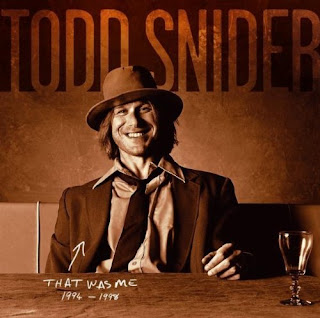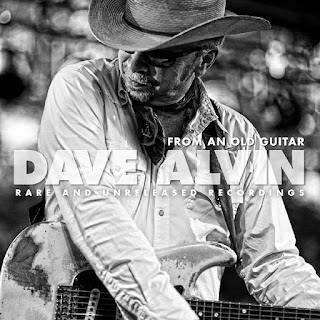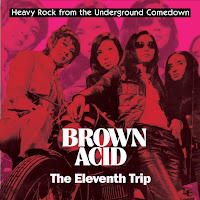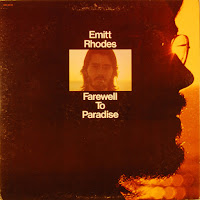Little did the major label A&R people know at the time that they were overlooking one of the first major steps towards a prog-rock revival. History has proven that Spock’s Beard’s The Light rivals only the parallel release of Roine Stolt’s The Flower King in importance and influence on the burgeoning prog-rock scene. Picking up the torch that had been discarded by obvious touchstones Yes and the Peter Gabriel-era Genesis, Spock’s Beard in America and the Flower Kings in Europe went about creating memorable music, jump-starting a long-dormant musical tradition.
Spock’s Beard’s The Light
Many consider The Light to be Spock’s Beard’s finest recorded moment, and I would not argue the point save to throw in a few caveats. Considering the album’s pedigree, the era in which it was released, and the circumstances surrounding its recording and the formation of the band, I would gladly concede the album’s influence. However, after careful consideration of the band’s entire catalog, I would consider The Light’s place in the Spock’s Beard canon to be that of a secondary effort. It is an important release, the first album for the band and, given the musical climate of the time, a bold departure from mainstream culture. However, I personally feel that later Spock’s Beard releases better define or further refine the band’s trademark sound.
Which is not to say that The Light should be dismissed as inadequate – it is merely a lesser work in relation to the band’s growing catalog of excellence. The Light remains a highly entertaining album and an amazing showcase for the young talents of the band’s founders, brothers Neal and Al Morse. The technical proficiency and mastery of their instruments shown by the Morse brothers, bassist Dave Meros, and drummer Nick D’Virgilio is quite stunning and nothing short of amazing. Absorbing the classic influence of Yes and that band’s penchant for extended song suites, The Light stands alone as a solid work of composition and lyricism.
The album kicks off with the fifteen-minute title track, broken down into eight disparate musical sections that evoke the music of Yes and King Crimson, vintage ‘60s psychedelic rock, even Spanish Flamenco, and would offer Spock’s Beard’s first overt Beatles references. Although Neal Morse’s raw vocals would later grow smoother and more mature, here they evince a certain energy and eagerness that stands in contrast to the popular music of the day. Al Morse quickly becomes a guitarist to be reckoned with, a talented fretboard artist whose ability to both compliment and dominate a song’s arrangement would become a major factor in the Spock’s sound. “The Light” is a suitable kick-off for the album of the same name, the band running through several musical styles from its bag of tricks, setting the stage for the listener and revealing the possibilities of that which would follow. Neal Morse’s lyrics range from insightful to oblique, often within the course of the same verse.
“Go the Way You Go” is slightly shorter than the opening title track, but no less grand. With extended instrumental passages that often descend into chaos, Neal Morse’s best pop star vocals, some fine band harmonies and the positive outlook of its lyrics, the song was a signpost of the band’s later musical direction. The song also shows off some of Neal’s best keyboard wizardry, with jazzy flourishes inspired by Billy Cobham and Herbie Hancock. A second song suite, “The Water,” clocks in at a taxing twenty-two minutes and contains both some of the band’s most exhilarating musical moments and, possibly, its most embarrassing.
“The Water” begins with some classically informed piano, evolving into a Rick Wakeman styled keyboard romp before leaping headfirst into a clash of vocals, guitar, keyboards, and percussion. Through the song’s seven or eight distinctive sections, the band quotes Pink Floyd and ELP and even throws in some soulful, Motownish backing vocals. Al Morse’s guitar crackles and snaps like a bullwhip, punctuating his brother’s vocals with stabbing riffs and reckless fretboard runs. Neal’s lyrics here are dark and angry, resulting in the aforementioned embarrassing moment on the “FU” section of the song when the pissed-off singer screams “fuck you” in his most punkish voice.
The emotion seems forced, however, not wry as with Nilsson’s “you broke my heart, you tore it apart, so fuck you” or genuinely frustrated/confused/angry as on a million punk rock songs. It’s a minor glitch in an otherwise ambitious song, and the resulting section, the pastoral “I’m Sorry,” only partially redeems the lapse in judgement. The second half of the song veers back into classic prog-rock territory, featuring maestro performances from the band’s instrumentalists while musically and lyrically the last two segments of “The Water” serve to connect the earlier segments, completing the song’s story and themes.
By comparison with the rest of the album, the brief and lively six-minute “On the Edge” sounds like an edit made for radio. Al’s atmospheric six-string work is razor sharp and quite engaging, complimenting Neal’s dancing keyboard passages while Meros and D’Virgilio provide a strong, and often quite funky, rhythmic undercurrent. The song is about as close to commercial as the band would come on The Light; unfortunately it was the right song in the wrong era. If it had been released two decades earlier, it would have been embraced by fans of Yes, ELP and possibly Zappa’s Mothers of Invention as the innovative pairing of intelligent lyricism and instrumental virtuosity that it is. The Metal Blade reissue of The Light includes the band’s original homebrew demo for the title track, interesting mostly in comparison, hearing the foundation on which the final rendition was built.
Part of the charm of Spock’s Beard has always been the band’s innate ability to quote several decades of musical predecessors without sounding trite, revisionist, or derivative. Whether miming the Beatles, David Bowie, Yes, or whomever they might consciously or subconsciously choose, Spock’s Beard has always made its musical references personal, its interpretations unique and entirely original. At no time was this more apparent than on The Light. Spock’s Beard’s debut album would do an excellent job in establishing the band’s credibility and announcing its arrival to the world outside of the insular Southern California rock scene. It is rightfully considered a classic of modern-day prog-rock, and rightfully so. But for Spock’s Beard, it was only the beginning.
Spock’s Beard’s Beware of Darkness
Using Leon Russell’s somewhat suspect arrangement of George Harrison’s wonderful “Beware of Darkness,” Neal Morse goes on to “prog up” the song with keyboard improvisations, syncopated vocals and brother Al’s wicked guitar riffing. The song also features Okumoto’s introductory keyboard solo, the new member showing off his chops for the first time. The SB arrangement of the song retains the spirit of the original while also taking it into an entirely different stylistic direction. Although some of Russell’s original vocals resulted in Morse’s misinterpretation of the lyrics, it all works out fine. “Beware Of Darkness” opens the door for an album consisting of shorter songs that would feature more concise and focused instrumental interludes. Spock’s Beard’s later albums would vacillate back and forth between this approach and that of the lengthier song suites.
“Thoughts” was inspired by Neal’s discovery of Gentle Giant, an obscure British prog-rock band similar to Genesis but with more classical music influences. The instrumental passage that opens the song sounds somewhat Baroque to these ears, with syncopated rhythms leading to an enviable bit of harmonic vocal interplay that would have the members of Yes in awe. The song’s lyrics are a reflective look inward, an introspective treatment of doubt and hesitation. With its unusual arrangement and interesting vocal gymnastics, the song would stand out on any prog-rock album.
A gentle classical piano intro opens “The Doorway,” the second longest song on Beware of Darkness. The keyboards eventually kick in, the percussion begins pounding and Al Morse’s multi-layered and textured guitarwork runs the gamut from subtle acoustic craftsmanship to sharp circular rhythms. The song features some of Neal’s finest, most passionate vocals and, perhaps, the sparsest arrangement of any Spock’s Beard song at that point. Midway through the song, however, everybody takes a turn showcasing their instrumental prowess and the song finishes as a grand fusion of classical influence and rock ‘n’ roll showmanship, Al’s fluid guitar lines and a wicked keyboard riff carrying the song out.
The instrumental “Chatauqua” features some wonderfully crafted Spanish-styled guitar by Al Morse, providing an excellent showcase for the guitarist’s range and versatility. The full-blown prog-rock rave-up “Walk On the Wind” would follow, the song’s oblique lyrical poetry among Morse’s best, his vocals rising and falling in range with the instrumentation. Al is once again allowed to stretch out, delivering an electric lead solo that sparks with life and energy. The playful clashing of Morse’s piano and Okumoto’s keyboards is subtle and almost lost in the mix.
“Waste Away” is a fine song about self-delusion and lost opportunities, Morse’s stylized lyrics supported by folkish acoustic guitar, chiming keyboards and a big beat. By the time that Al’s electric guitar kicks in, Neal’s vocals rise in volume and intensity, driving his lyrical point home with some force. At a mere five minutes in length, “Waste Away” would have made for some great-sounding radio.
The album ends with the epic “Time Had Come,” a sixteen-minute revisiting of prog-rock’s finer moments that has plenty of what the band’s early fans came to hear – lengthy instrumental jams, a spacey arrangement, altered vocals, and hard-to-decipher lyrics. The band channels elements of early Pink Floyd, Wakeman-era Yes, vintage ‘60s psychedelica, and ‘70s-styled space-rock and even a little German-influenced electronic rock. The reissued Beware of Darkness includes the original home demos of the title track and “The Doorway,” perhaps the album’s two strongest and most entertaining songs.
Spock’s Beard’s The Kindness of Strangers
With The Kindness of Strangers, the band takes a “best of all worlds approach,” bookending the album with two lengthy song suites, similar to its debut disc, and filling in the middle with shorter AOR-friendly songs, refining the tact from their second album. The album features Neal Morse’s most fully-realized lyrics to date, the musician finding his voice as a songwriter, moving away from the oblique poetry of the first two Spock’s Beard albums towards a more direct, traditional style of writing. The Kindness of Strangers also shows the first signs of the band’s underlying pop tendencies, the songs including more Beatlesque hooks between the amazing flights of instrumental virtuosity.
The album also includes Neal Morse’s first overt attempts at social commentary in his lyrics. “The Good Don’t Last,” a song suite in three parts, displays Morse’s disgust with assembly-line produced pop culture and foreshadows his eventual embrace of Christianity with the spiritual segment “The Radiant Is.” The ten-minute opus includes a nice orchestral string section that augments Okumoto’s dazzling keyboard runs and brother Al’s magnificent guitarwork. “In the Mouth of Madness” is grand in scope; a fine example of what would become Spock’s Beard’s trademark sound. Plenty of handsome string-bending by Al Morse, a fireworks display of keyboards and synths and drummer D’Virgilio’s most outrageous workout yet. If you had to play one song for a friend to explain prog-rock to the uninitiated, “In the Mouth of Madness” would be that song.
“Cakewalk On Easy Street” offers some positive lyrics, a reaffirmation of being and a reminder that things could always be worse. Neal’s lyrics are supported by some tasteful piano fills, D’Virgilio’s dynamic rhythms and knotty six-string manipulation by Al. According to Neal Morse’s liner notes, “June” almost didn’t make the cut to be included on The Kindness of Strangers, which would have been a mistake. “June” features some wonderful three-part harmonies and an overall acoustic-pop sound that made it a popular song with live audiences. “Strange World” displays Neal’s wry sense of humor, the song’s commentary outlining society’s unbalanced sense of priorities and the often times unrecognized surrealism of life. Morse’s vocals are altered at times, with spacey, effects-laden guitarwork skewed towards a psychedelic sound.
The lengthy “Harm’s Way” is the album’s instrumental showcase. The song is held down by a steady, rock-solid Dave Meros bassline upon which the rest of the band embroiders its various solos and musical embellishments. The song’s lyrical message seems to be “live your life,” a sort of “carpe diem” philosophy. With varying passages and time changes as well as evolving atmospherics, “Harm’s Way” is another fine example of prog-rock classicism. The second song suite “Flow” closes the original album, its three disparate segments running hot and cold with changing musical moods and various emotional palettes. The song offers a meditative reflection on the nature of life and points towards Neal Morse’s future lyrical inclinations, the metaphorical lyrics more closely akin to those on the band’s first two albums.
The reissued The Kindness of Strangers includes several bonus tracks, including radio edits of “The Good Don’t Last,” “Cakewalk On Easy Street” and “In the Mouth of Madness” that reign in the band’s instrumental tendencies and tighten the focus of the lyrics and instrumentation. Although all three songs would make for refreshing radio programming, “Cakewalk On Easy Street” would have been my choice to serve as an introductory taste of Spock’s Beard, the song’s positive message and amazing soundtrack providing a strong initial impression of the band. The original home demos for “June” and “Strange World” round out this version of the album, offering insight into the evolution of both songs.
With The Kindness of Strangers, the band’s musical vision and personal chemistry hit another peak. The band would subsequently tour Europe, earning a loyal following that appreciates the prog-rock aesthetic and eagerly supports both Spock’s Beard and Neal Morse’s individual and collaborative musical efforts. The first three Spock’s Beard albums built a solid foundation for the band’s live performances and raised expectations for future recordings. After releasing three exhausting albums in three years, the band would not venture into the recording studio for over a year, releasing its next album, Day For Night in 1999.
The Reverend’s Bottom Line
Neal Morse left the band he founded in 2003 after almost a decade of
acting as the Spock’s Beard ringleader. As the primary songwriter for the band
as well as a charismatic lead vocalist and multi-talented instrumentalist,
Morse’s controversial defection left the future of Spock’s Beard up in the
air. While Morse, a born-again Christian, went through a period of
self-reflection and soul-searching after he left the band, he started a solo
career without missing a beat. Two excellent solo albums, along with his
collaborations with Roine Stolt of the Flower Kings and Mike Portnoy of Dream
Theater under the Transatlantic name has kept Morse’s work in the public eye.
Spock’s Beard has also soldiered on, drummer Nick D’Virgilio
taking over the vocal duties and the band sharing the songwriting on its two
post-Neal albums, Feel Euphoria and the new Octane. The band’s
sound has undergone a gradual evolution, featuring a harder rock ‘n’ roll edge
and more AOR-radio friendly sound. The band remains one of the most popular in
progressive rock, however, even as it continues to break new ground with
innovations in sound and performance. The first three Spock’s Beard albums,
however, resurrected by Metal Blade, remain fan favorites, defining the band’s
signature sound and widening the audience for prog-rock during the ‘90s.
(Metal Blade Records, released 2004)
Review originally published by Alt.Culture.Guide™ zine, 2004
Buy the CDs from Amazon.com:
Spock’s Beard’s The Light
Spock’s Beard’s Beware of Darkness
Spock’s Beard’s The Kindness of Strangers



























